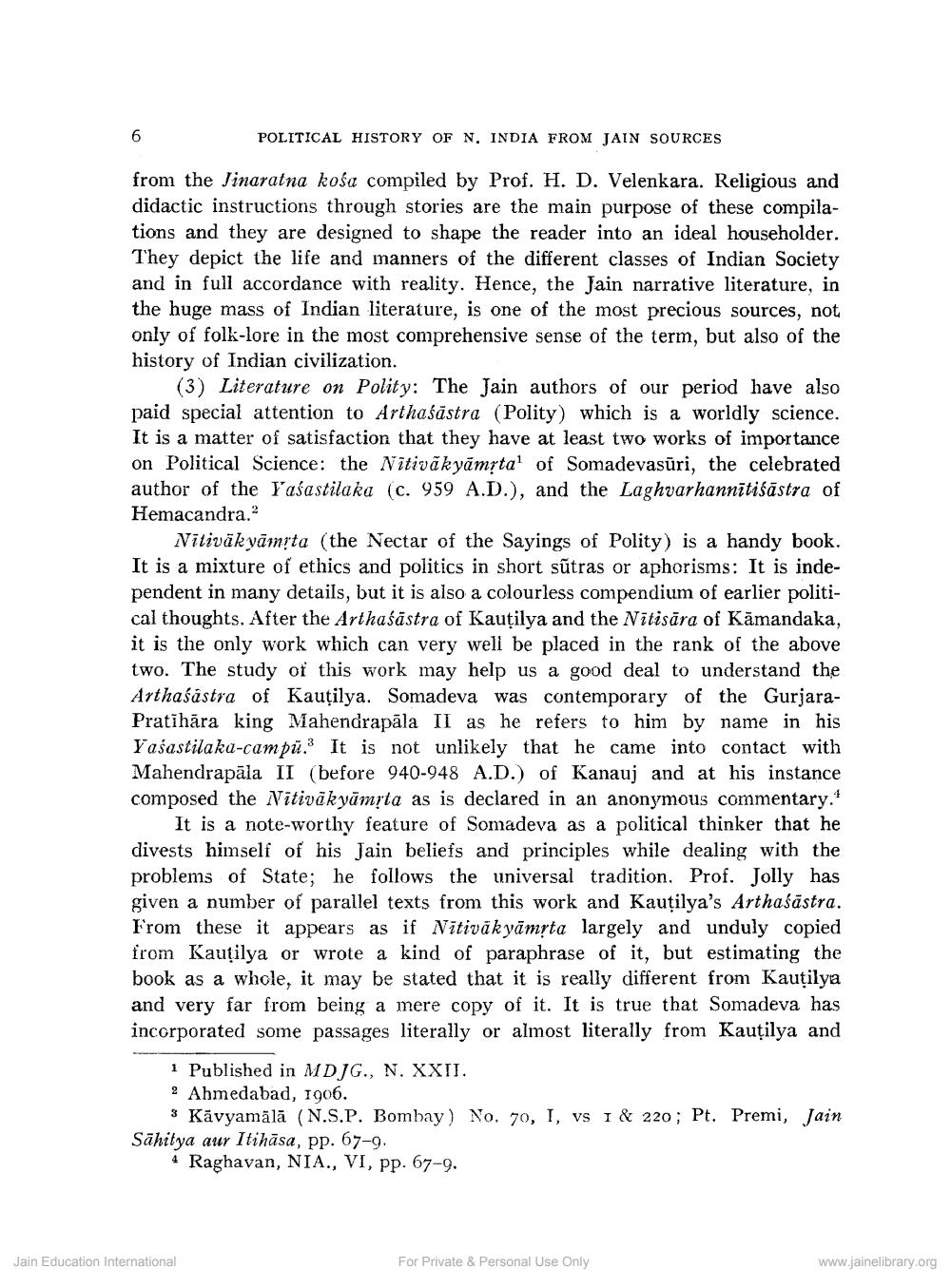________________
6
POLITICAL HISTORY OF N. INDIA FROM JAIN SOURCES
from the Jinaratna koša compiled by Prof. H. D. Velenkara. Religious and didactic instructions through stories are the main purpose of these compilations and they are designed to shape the reader into an ideal householder. They depict the life and manners of the different classes of Indian Society and in full accordance with reality. Hence, the Jain narrative literature, in the huge mass of Indian literature, is one of the most precious sources, not only of folk-lore in the most comprehensive sense of the term, but also of the history of Indian civilization.
(3) Literature on Polity: The Jain authors of our period have also paid special attention to Arthasästra (Polity) which is a worldly science. It is a matter of satisfaction that they have at least two works of importance on Political Science: the Nitiväkyämṛta' of Somadevasüri, the celebrated author of the Yasastilaka (c. 959 A.D.), and the Lagkvarhannitiśästra of Hemacandra."
Nitiväkyämṛta (the Nectar of the Sayings of Polity) is a handy book. It is a mixture of ethics and politics in short sutras or aphorisms: It is independent in many details, but it is also a colourless compendium of earlier political thoughts. After the Arthatastra of Kautilya and the Nitisära of Kamandaka, it is the only work which can very well be placed in the rank of the above two. The study of this work may help us a good deal to understand the Arthasástra of Kautilya. Somadeva was contemporary of the GurjaraPratihåra king Mahendrapala II as he refers to him by name in his Yasastilaka-campu. It is not unlikely that he came into contact with Mahendrapala II (before 940-948 A.D.) of Kanauj and at his instance composed the Nitiväkyämṛta as is declared in an anonymous commentary.
It is a note-worthy feature of Somadeva as a political thinker that he divests himself of his Jain beliefs and principles while dealing with the problems of State; he follows the universal tradition. Prof. Jolly has given a number of parallel texts from this work and Kautilya's Arthasästra. From these it appears as if Nitiväkyämṛta largely and unduly copied from Kautilya or wrote a kind of paraphrase of it, but estimating the book as a whole, it may be stated that it is really different from Kautilya and very far from being a mere copy of it. It is true that Somadeva has incorporated some passages literally or almost literally from Kautilya and
1 Published in MDJG., N. XXII.
2 Ahmedabad, 1906.
* Kavyamālā (N.S.P. Bombay) No. 70, I, vs 1 & 220; Pt. Premi, Jain Sahitya aur Itihasa, pp. 67-9.
• Raghavan, NIA., VI, pp. 67-9.
Jain Education International
For Private & Personal Use Only
www.jainelibrary.org




